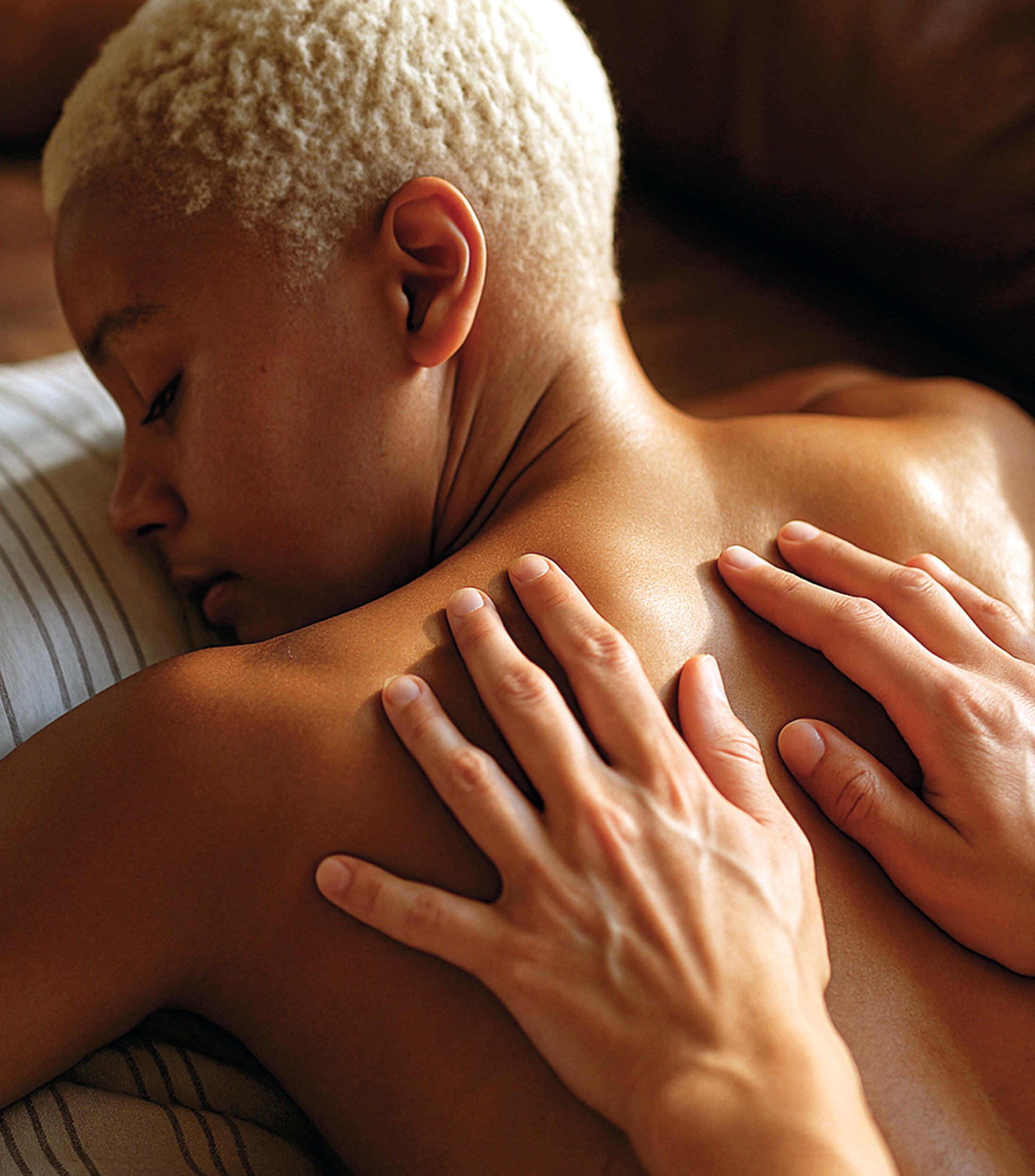Psychological Factors
Arousal In Men Versus Women
What If I Can't Get Aroused? Is That a Problem?
Increasing Arousal in Men
Increasing Arousal in Women
When talking about sex, many of us use "sexual desire" and "sexual arousal" interchangeably. But are they the same thing? What is sexual arousal in the clinical sense?
Adding to the confusion, depending on where you are on the gender spectrum, you can experience arousal differently from someone else. People with penises can experience arousal more physically than someone with a vagina and vice versa.
Here, we'll try and separate the facts about sexual arousal from fiction. We'll also provide some tools to understand your arousal better, which can help you know your partner in a sexual relationship.
So What Is Sexual Arousal?

The difference between desire and arousal is that desire refers to the emotional want to have sex. In contrast, arousal refers to the physiological changes to your body that happen when you're sexually excited.
Arousal is stage two of the human sexual response cycle, which consists of four phases:
-
Desire: Your heart rate increases, muscles tense, blood flow increases, and the genitalia and skin might become flushed.
-
Arousal: Changes from the desire phase intensify. Breathing, blood pressure, and heart rate continue to increase. For men, testicles withdraw close to the body. The clitoris becomes very sensitive, and the vagina swells with increased blood flow. This stage lasts until right before orgasm.
-
Orgasm: The climax of the sexual response cycle and the shortest phase, generally only lasting a few seconds. Muscles contract and release tension, the body gets flushed and red, and people with penises ejaculate.
- Resolution: Your body starts to relax and calm down after orgasm, with heart and breathing rates gradually returning to normal. Body parts that had become erect or swollen returned to their average size.
Arousal can start with so many different things: the touch of a partner, an erotic image or video, specific thoughts or feelings of closeness with someone, to name just a few. The multifaceted nature of arousal is why it's so important to understand it in ourselves.
Read: The Benefits of Orgasms for Men
Psychological Factors
Our mental state can play a considerable role in arousal, and the same condition can produce different results in different people.
For example, an experiment from the mid-1980s studied a group of men to see the effect of anxiety on their ability to become sexually aroused. Some of these men had reported arousal problems before the experiment, and some hadn't.

During one part of the experiment, the men were told they'd get an electric shock if they couldn't become aroused, which increased arousal in some people. The threat of electric shock made those people focus more intently on the "erotic audiotapes" they listened to.
Read: What Are The Benefits of Orgasms On Your Health?
Modern-day researchers at the Kinsey Institute have constructed a model of sexual arousal that includes both things that excite and things that inhibit sexual response. The Sexual Inhibition and Sexual Excitation Scale tries to tease out the link between arousal level and things like sexual dysfunction or risky sexual behavior.
While most early sex research focused on men, more recent studies were conducted around women's sexual arousal. In many ways, men's and women's bodies react when aroused, but they're very different in others.
Read: The Benefits of Using a Vibrator in Menopause
Arousal In Men Versus Women

When it comes to what the brain does during sex, men and women aren't very different. Both have difficulty focusing on anything but sex when aroused (not surprisingly). The brain-stimulated areas also appear to be mostly the same — though one study in 2012 showed the amygdala and thalamus were slightly more active in men.
Physiological changes during arousal are also similar. Blood flow increases to the genitalia, and breathing, blood pressure, and heart rate go up. Men tend to become aroused and orgasm faster than women — which men should be aware of and put the extra time in to make sure their partner is satisfied.
For men, how turned on they think they are generally matches how physically aroused they are. For women, though, there can be little to no correlation between how prompted they say they are and their body's arousal response.
"What we find in research in males is there's a very high correlation between their erectile response and how aroused they say they are," Cindy Meston, Ph.D. of the University of Austin, said in an interview with the Monitor on Psychology journal. "But in women, we get low, if any correlations."
Researchers haven't been able to pin down an apparent reason why this happens. These studies don't often involve intersex or transgender people, so their perspective is missing from the data.
Read: Perfect Foreplay Sex Toys
What If I Can't Get Aroused? Is That a Problem?
Sexual arousal includes both psychological arousal and physiological arousal. If one of those is out of sync or has an underlying medical issue, it can cause arousal levels to dip. It could also be how naturally — asexual people experience little to no desire to have sex.

There's nothing wrong with not wanting to have sex or not having sex if you aren't ready. But if you do want to have sex but can't become aroused, you can try methods and conditions you can talk to a doctor about.
Increasing Arousal in Men
Improve prostate health by balancing testosterone levels, stimulating blood flow, and heightening arousal with Good in Bed Men's Blend, a natural, vegan supplement.Man's inability to get aroused can come from mental factors, physiological issues, or both. Some physical conditions that can affect sexual functioning include:
- Cardiovascular conditions
- Mental health concerns like stress or anxiety
- Erectile dysfunction (ED)
Age can also play a part. After around 40, libido and sexual functioning changes may mean that arousal takes longer.
Someone's mental state can also inhibit arousal. Performance anxiety, stress, or relationship issues could be the culprit just as quickly as a physical issue.
To increase arousal, first, make sure you're reasonably certain of the problem so it can be tackled the right way. If it's physical, talk to your doctor about ED medications. Non-medical solutions like penis pumps may also help.
If you think the problem is psychological, there are other roads you can take. Try being more open with your partner about your sexual desires and fantasies. You must read: How to Talk About Sex with Your Partner?
Tell your partner what turns you on and ask that they do the same. It isn't limited to men. No matter your gender, getting to know your body can help you understand your arousal.
Increasing Arousal in Women
Improve vaginal health and increases natural lubrication, heightened arousal, and sexual satisfaction with Good in Bed Women's Blend, a natural, vegan supplement.As with men, there can be physical and psychological reasons for lack of arousal in women. Unfortunately, research into female sexual arousal is scarce, but some methods are to try.
First, take stock of your body and what turns you on. Exploring erogenous zones and masturbating by yourself can clue you in to your body and desires. Trying different luxury sex toys is also a great way to experiment.
Once you have a better idea of what you like, talk about that with your partner. Take your time and prolong foreplay, letting them know what you want.
You must to learn How To Build a Sexual Wellness Routine. Sexual wellness is more than just sex — it's about your overall physical, mental, and social health.
Whether you're a man or woman, improving your sexual health will increase your quality of life, make sex more enjoyable, and enhance your view of sexuality. So make sure you build a healthy sexual wellness routine. It's one of the best things you can do for your health.

Certain over-the-counter medications like flibanserin (Addyi) and bremelanotide (Vyleesi) have been approved to treat low arousal in women. Talk to a doctor before trying them, and make sure you understand what the side effects will be.
Both men and women can benefit from trying some fundamental lifestyle changes like:
- Eating healthier
- Getting regular exercise
- Speaking with a sex therapist
- Solo masturbation and exploration
It's also worth speaking with a doctor if you think you're experiencing female sexual interest/arousal disorder, resulting from anything from medications you're taking to physical changes to psychological fatigue.
Arousal Is Complicated
If you don't want to have or aren't interested in sex, there's nothing wrong with that and nothing wrong with you. If you feel like a lack of arousal affects your quality of life, though, there are treatments you can pursue.
Set aside some time to dig deep and figure out what you like. Figure out what arousal looks like for you. If your arousal is low, take stock of what's going on in your life and check if anything could be causing that.
You don't have to go it alone, either. Speak with a qualified doctor or sex therapist who can help you figure out your body if you're having trouble. Once you figure out what gets you going, you'll feel it.
Sexual activity doesn't have to always be with a partner. It's beneficial to engage in sexual activity alone through regular masturbation. So have fun with it! Incorporate supplements and tools into your routine to help your libido and dryness. Some devices may include:
References:
Sexual Response Cycle. (March 2021). Cleveland Clinic.
Shock Threat and Sexual Arousal: The Role of Selective Attention, Thought Content, and Affective States. (March 1987). Psychophysiology.
The science of sexual arousal. (April 2003). Monitor on Psychology.
Functional neuroimaging studies of sexual arousal and orgasm in healthy men and women: a review and meta-analysis. (July 2012). Neuroscience and Biobehavioral Reviews.
What Is Asexual?. (2020). WebMD.
Low Sex Drive in Women: Symptoms, Diagnosis, and Treatment. (October 2017). Healthline.
 Vibrators
Vibrators Toys for Women
Toys for Women Toys for Men
Toys for Men Couples & Partners
Couples & Partners



Share
Rise and Shine, Literally. What Causes Morning Wood?
Low Libido? How To Boost Libido in Women